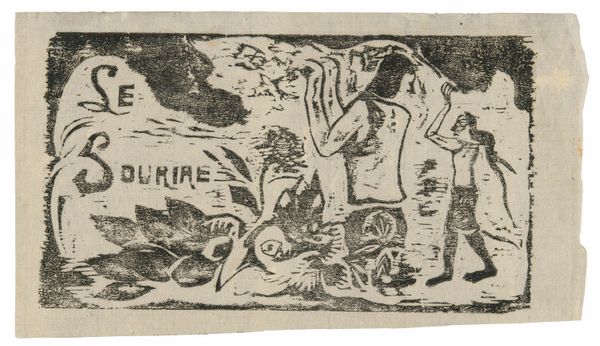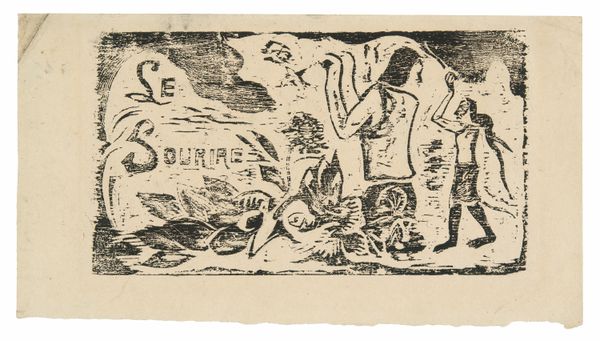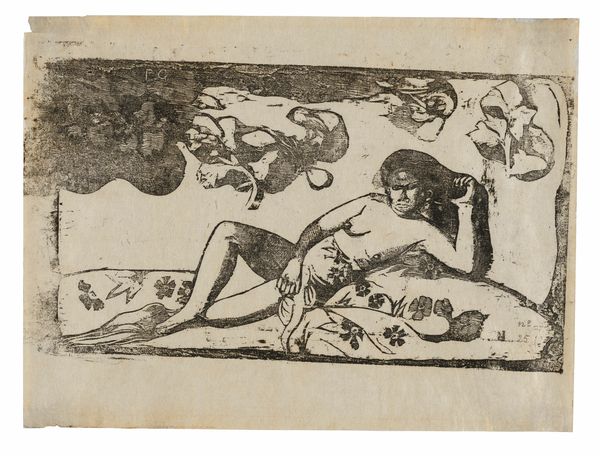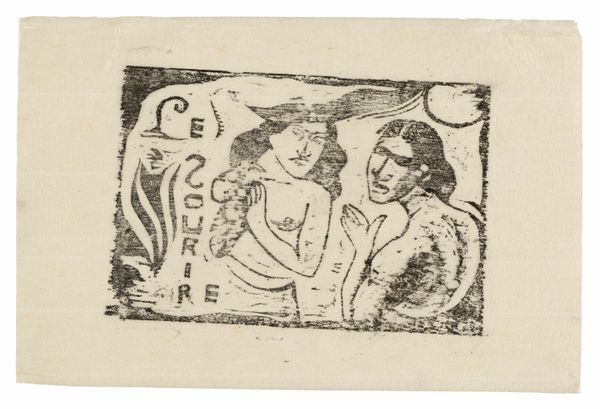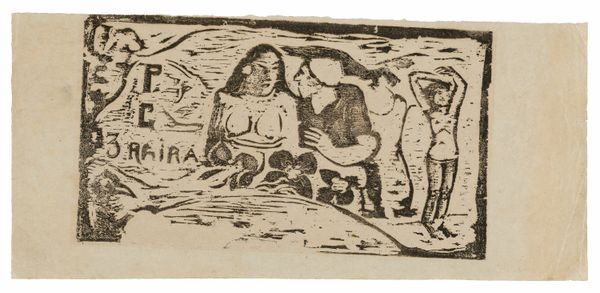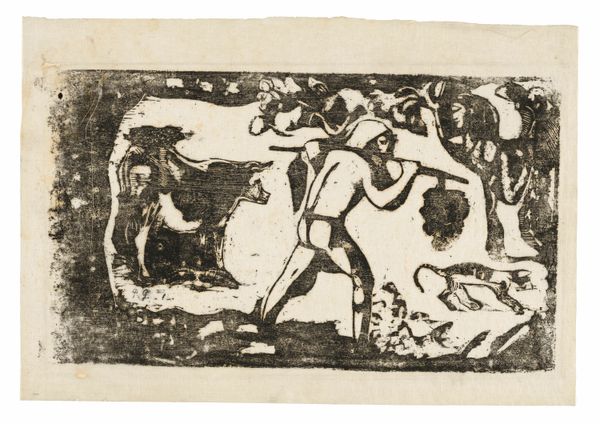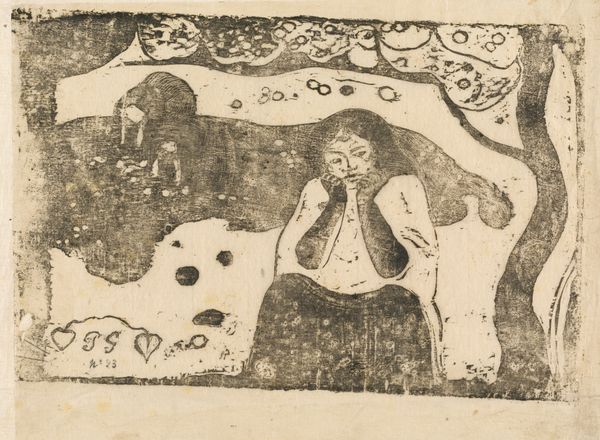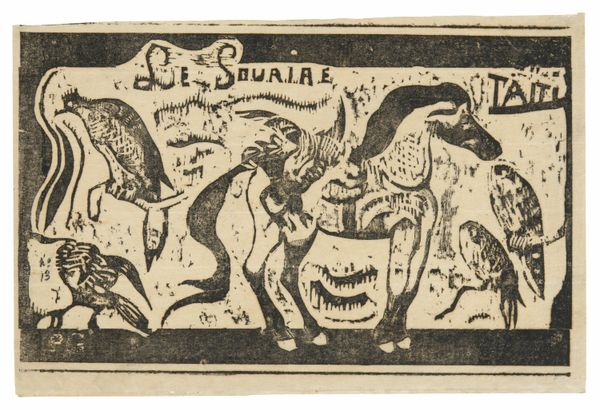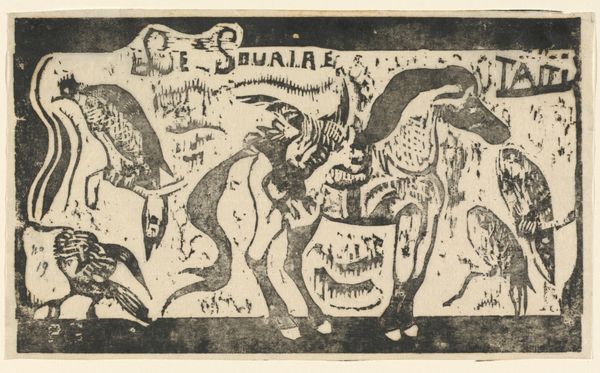
drawing, print, paper, woodcut
#
drawing
#
pen drawing
# print
#
landscape
#
paper
#
woodcut
#
france
#
symbolism
#
post-impressionism
#
nude
Dimensions: 104 × 187 mm (image); 120 × 201 mm (sheet)
Copyright: Public Domain
Curator: Good morning. Before us is a work by Paul Gauguin, entitled "Tahitian Woman, headpiece for Le sourire", created between 1899 and 1900. The medium is woodcut on paper, now residing at The Art Institute of Chicago. Editor: It's striking how stark the black and white contrast is. Very raw, like a quick study, yet there's an undeniable sensuality to the figure. Curator: Absolutely. It served as the headpiece for a journal Gauguin was developing, “Le Sourire”—or “The Smile”— during his second stay in Tahiti. This woodcut reveals Gauguin's efforts to establish a voice amidst colonial narratives prevalent at the time. Editor: Woodcut, right? That material choice feels loaded here. A rejection of refined, academic techniques in favor of something rougher, more immediate, reflecting perhaps a "primitive" aesthetic—a concept itself fraught with colonial implications, naturally. Curator: Precisely. Gauguin sought authenticity by aligning himself with indigenous artistic traditions, although his interpretation was inevitably filtered through a European lens. This piece, meant to head the journal "The Smile", underscores his engagement with local culture—his smile turned into print intended for public reception and critical engagement within Parisian circles. Editor: There’s also the question of labor. Who was preparing the blocks? Who printed these? It reminds me that Gauguin's escape to the South Seas was financed, in part, by systems of patronage and exploitation. The romantic vision of the solitary artist ignores the material conditions and social structures enabling his work. Curator: And the very concept of "The Smile," presented via woodcut on paper - signals both invitation and underlying criticism directed toward those societal mechanisms that propelled artistic creation and popularity during this Post-Impressionist moment within French society. It raises an important question of how public forums enable dialogue and dissemination that is at once critical and promotional for Gauguin's image. Editor: Examining the processes, materiality and even the conditions under which art gets produced are crucial lenses through which we come to have richer and perhaps more critical ways to appreciate art and the worlds through which the art comes to be. Curator: Indeed. It leaves us pondering how artistic endeavors interplay with broader social, cultural, and economic contexts, constantly challenging perspectives that surround even seemingly simple or rudimentary methods and materials in production processes.
Comments
No comments
Be the first to comment and join the conversation on the ultimate creative platform.
